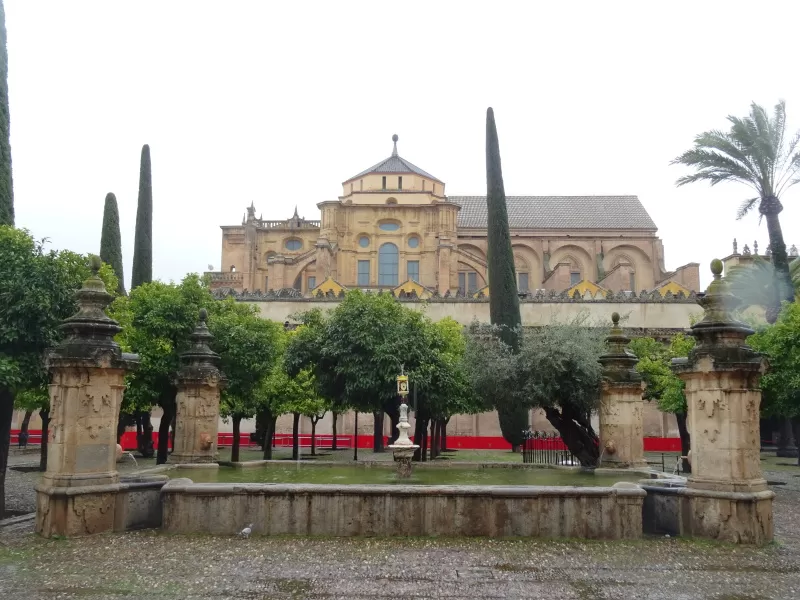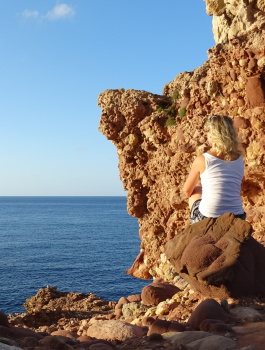Today I would like to tell you about my trip to Córdoba. My goal was, as usual, to explore and to see as much as I can. My plan was kind of ruined by the weather though. It was raining all day long and it was very windy so even though I had umbrella, I got completely wet. Of course I couldn’t walk in the rain all day, so I stopped many times in different bars/restaurants in order to get warm and to have a drink or food. During the day I still managed to see some places but before I’ll share it with you, let me tell you something about the city itself.
History of Córdoba
The city was founded in Roman times. In 711 it was captured and largely destroyed by Muslims. During the 9th and 10th century, Córdoba was a great cultural, political, financial and literary centre, with the largest library in the world. In 1236, the city was captured by the king Ferdinand III. and became the part of the Christian Spain. The city declined especially after Renaissance times. It started to increase again in the early 20th century.
Places to see
1. Mosque – Cathedral
The Mosque – Cathedral of Córdoba is definitely the most famous monument in the city. It’s actually one of the most exceptional monuments in the world. Its an Islamic mosque that was converted into a Christian cathedral in 1236. The original structure was built in the years 786-788, during the 9th and 10th century it was extended several times so it doubled in its previous size. In 1984, the historic centre of Córdoba, including the mosque – cathedral, was made a UNESCO World Heritage Site.
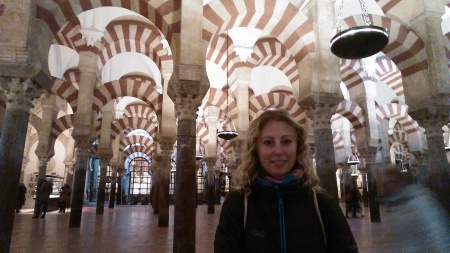
The mosque is most notable for its giant arches and for its forest of over 856 columns of jasper, onyx, marble and granite. These were taken from the Roman temple which had previously occupied the site and other destroyed Roman buildings. In the centre of the building, there is a Renaissance cathedral with the gothic ceiling, the baroque lectern and pulpit and the renaissance walls. Outside the mosque – cathedral, there is the Curtyard of the Orange Trees (Patio de los Naranjos) with a fountain. There is also a Tower of Alminar (Torre del Alminar) that you can visit for additional 2€.
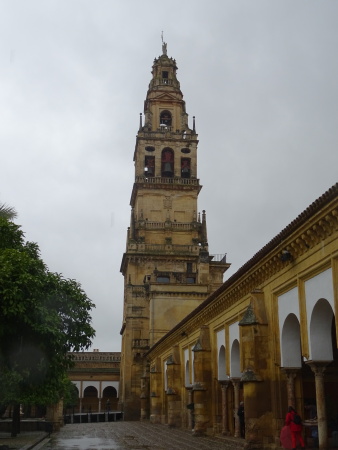
Because of the rain, I couldn’t visit the tower but I did visit the mosque – cathedral and it’s really worth entering. It’s huge and you spend there approximately 1 hour. In case you read all the signs, you’ll definitely need more time. When it’s sunny, it has to be beautiful to sit outside, watch the fountain or just to walk around. Maybe I’ll be more lucky with the weather next time I’ll come there!
Admission: 10€ (FREE from Monday till Saturday from 8:30 till 9:30) + 2€ entrance to the tower
Website:mezquita-catedraldecordoba.es/en
2. Roman bridge
Roman bridge was built in the early 1st century BC across the Guadalquivir river. Most of the present structure dates from the Moorish reconstruction in the 8th century. It has 16 arcades, a total length of 247 meters and a width around 9 meters. At the bridge’s ends there were built towers – Calahorra Tower and Puerta del Puente.
When I got to the Roman bridge, it was raining a lot and the wind was so strong that it was impossible to take some nice photos. I didn’t even cross the bridge. I decided to stay in the historic part of the city in order to visit more places.
3. Roman temple
Roman temple is situated next to the Town Hall. It was discovered in 1950s during the expansion of Town Hall. It wasn’t the only temple of the city but it was probably the most important one. It was built during the second half of the 1st century. The temple was reconstructed by the architect Félix Hernández, some of the original pieces of the temple can be seen in the archaeological museum.
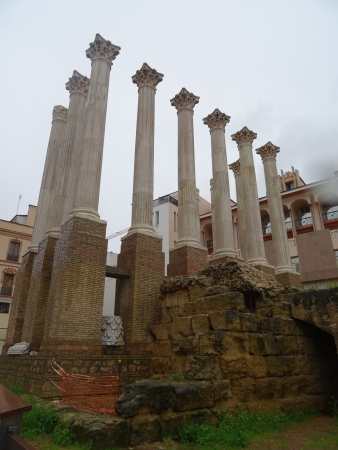
4. Corredera square (Plaza de la Corredera)
The Corredera square has its entrance and exit Arch – Upper Arch (Arco Alto) and Lower Arch(Arco Bajo). In the past, the square was used for different kind of events – celebrations as well as for the bullfights. That’s probably why the buildings were painted with red colour in order to represent the colour of the blood of the sacrificed bulls. The square’s actual appearance has remained unchanged since the 17th century. Today there are many cafeterias and restaurants with outdoor terraces. During the year, various cultural events take place on the square.
It’s a beautiful square, perfect for hiding from the rain and taking a drink when it’s sunny.
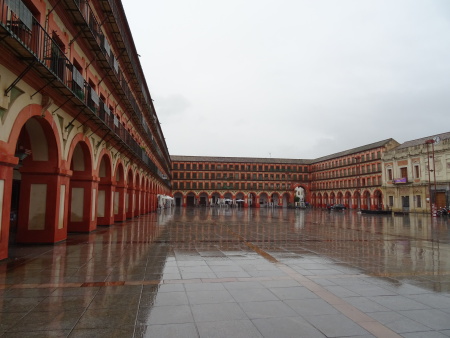
5. Walls and Almodóvar Gate
The Almodóvar Gate is mainly of Christian construction and its current shape dates from the 14th century. In Muslim times, it was known as Bad al-Yawz and it was one of the nine surviving gateways of the city. Just in front of the gate there is a statue of the Cordoban philosopher-playwright Seneca.
One day trip to Córdoba wasn’t enough, especially when it was raining all day. Nevertheless, I can say that the city is beautiful and there are many places to see. I just mentioned the places I was able to visit/see but I do hope to come back one day to be able to discover more things of this interesting city. I just hope it will be sunny next time I’ll come!
